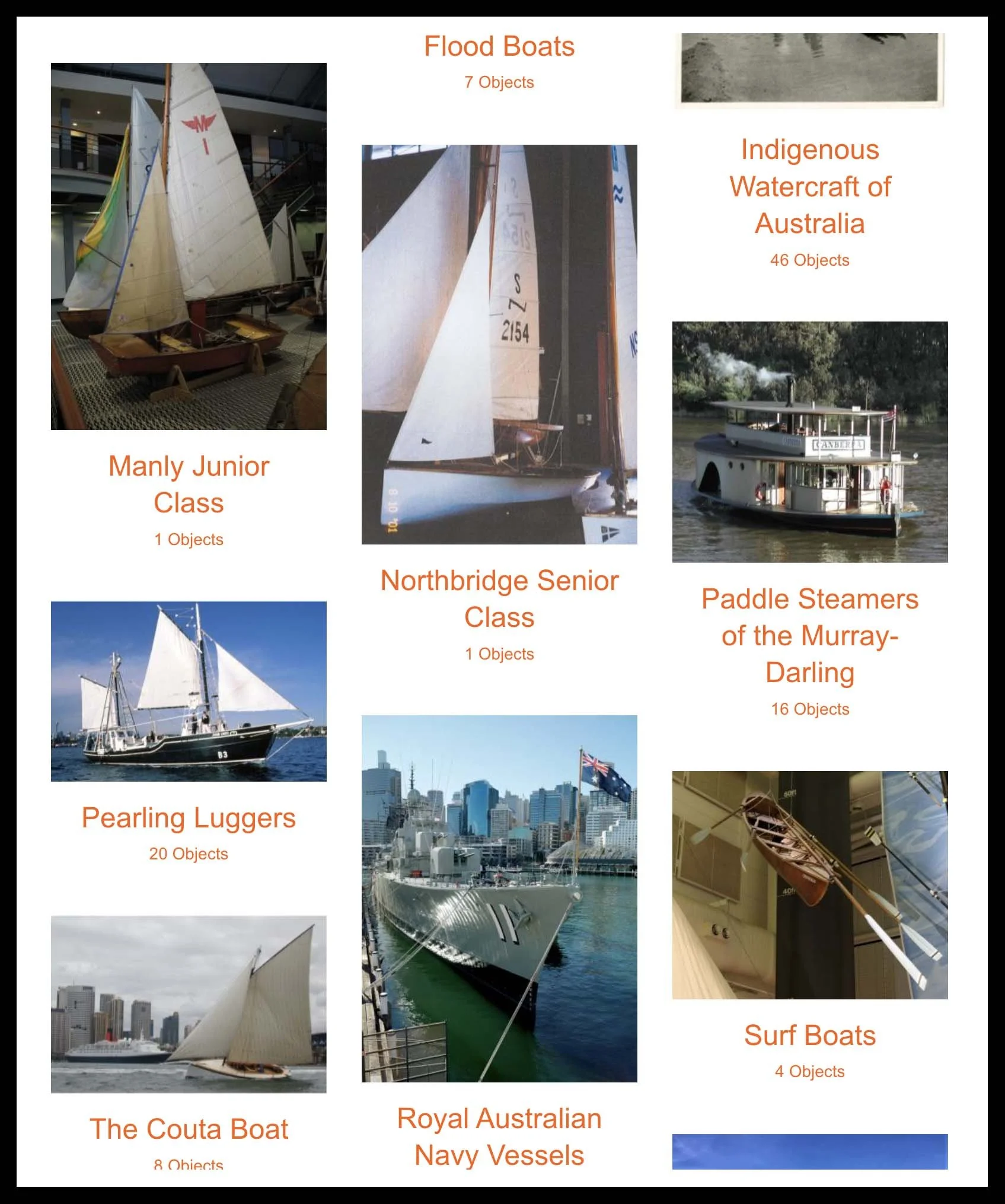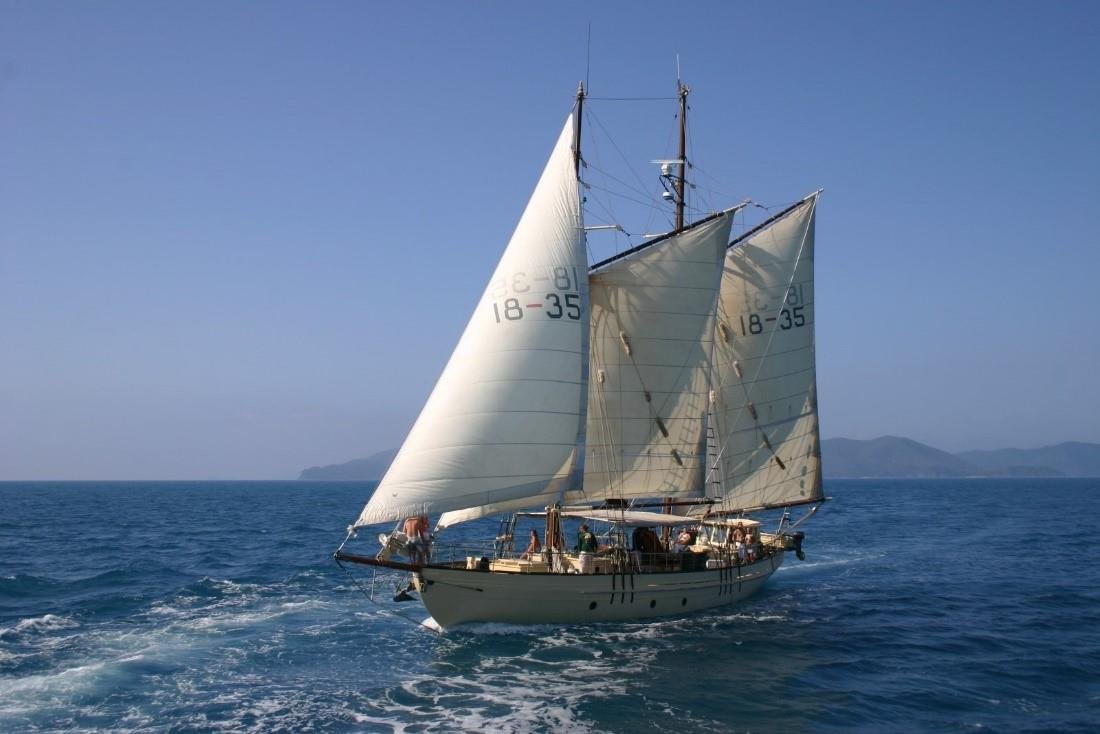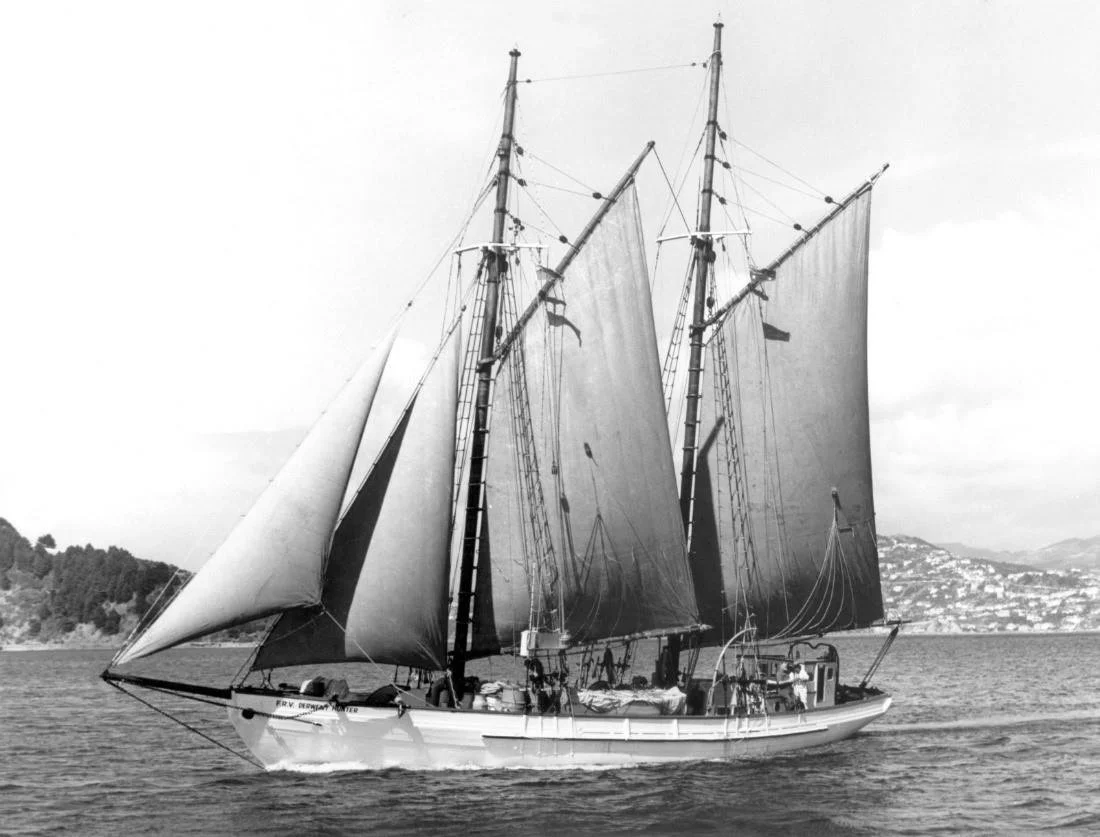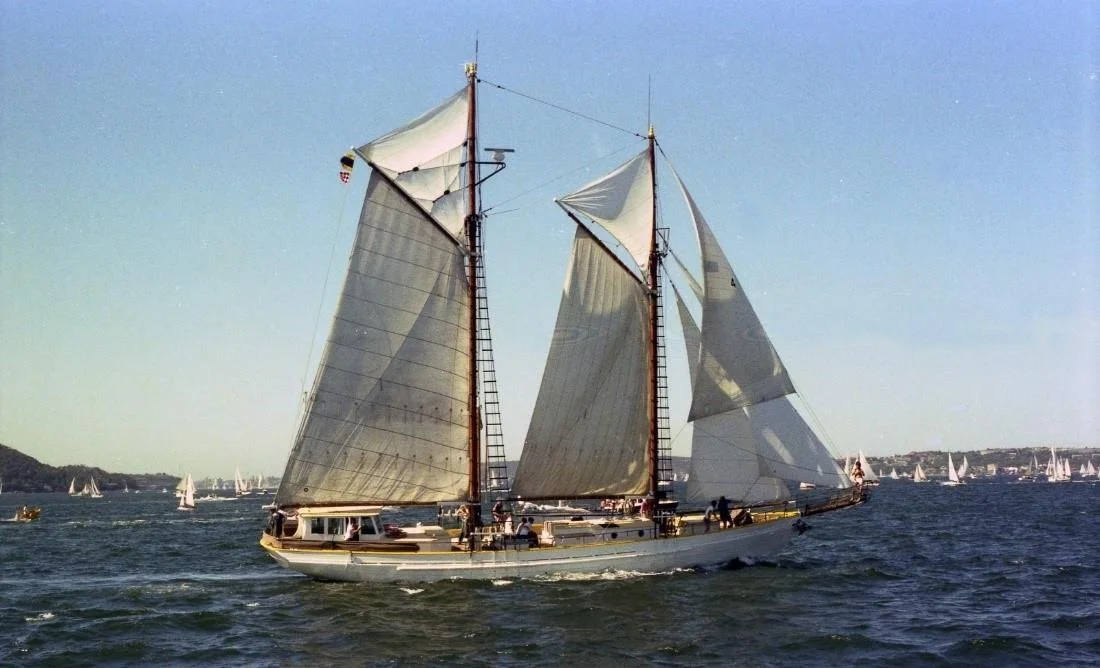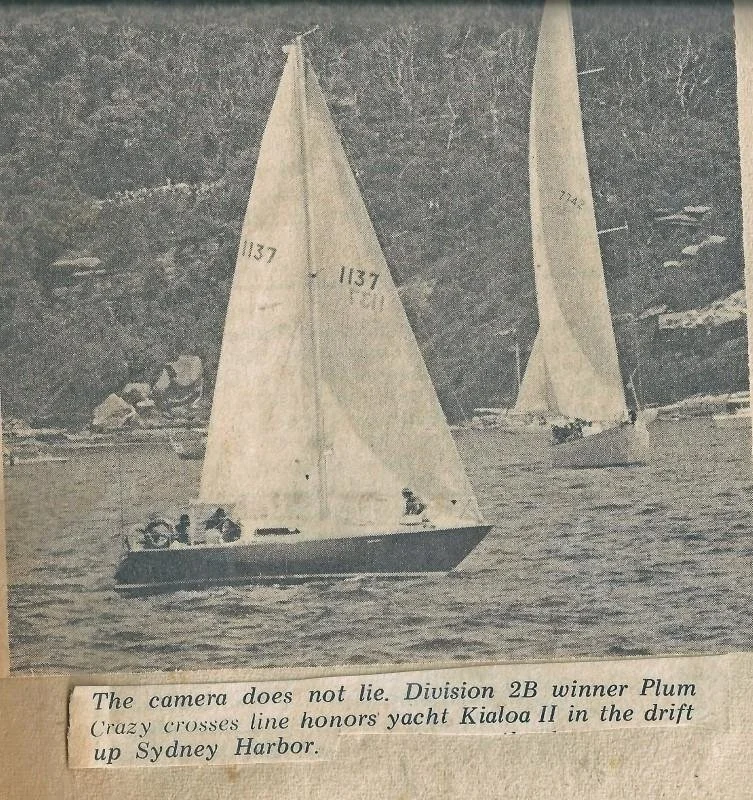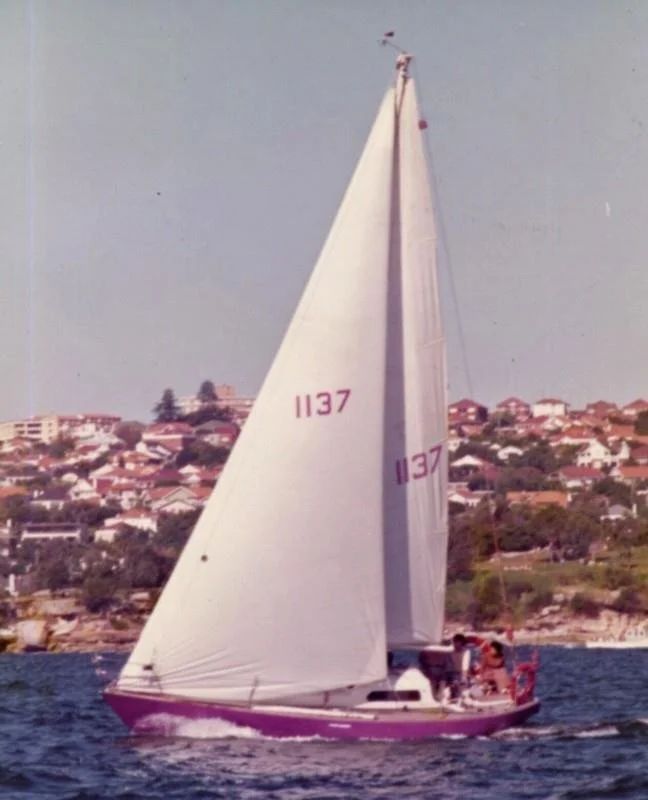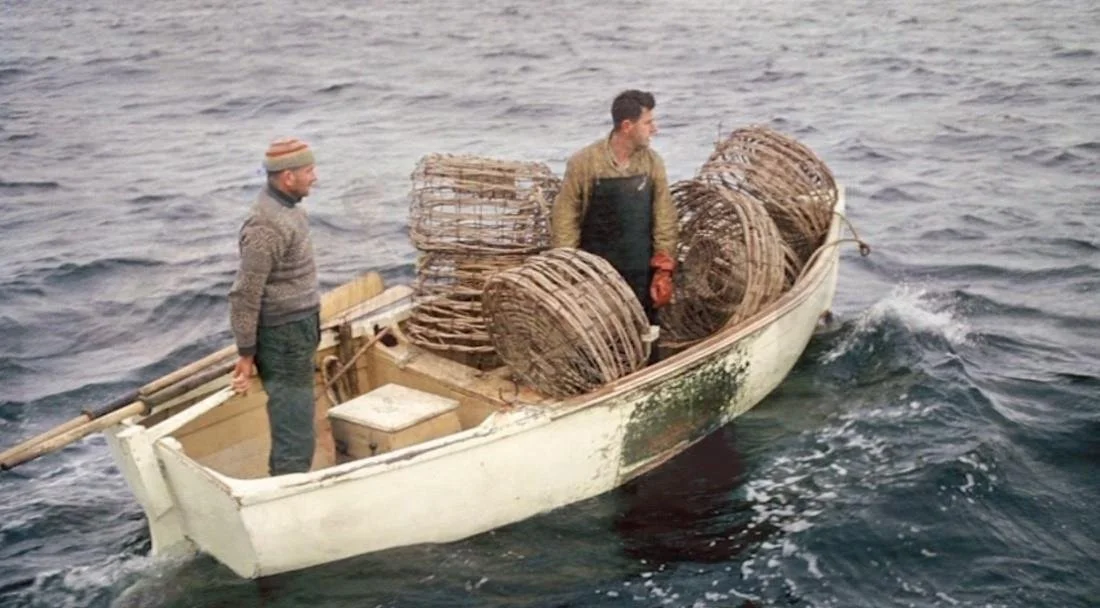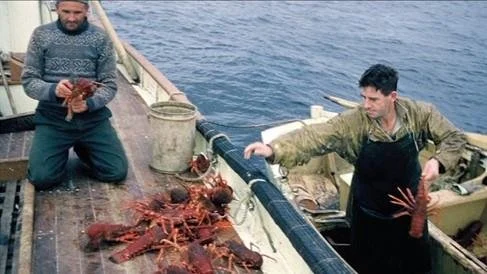The Definitive Online Repository
Some of you will know of the Australian Register of Historic Vessels but I doubt many know of the depth and breadth of information contained in this trove of over 800 boats deemed as significant to Australian Maritime History. Yes, it has issues… the site is prone to outages, its design stems from a time when the internet was a different beast and keeping it up to date is a monumental challenge, but despite all this, it is one of the most impressive undertakings in a sector where funding is often tight and academia can be undervalued.
So what’s it’s remit?
The Australian Register of Historic Vessels (ARHV) is the definitive online registry of historic vessels in Australia. A vessel is registered as historic after a rigorous process, including their relevance to Australia’s social history, and their particular significance to our maritime heritage.
Facts and figures are recorded with each vessel’s registration: current location, type or class, the eras their life spanned and the stories of their owners and designers.
The ARHV benefits all historic vessels by creating public awareness of the important role vessels have played in Australian history. This builds an environment for historic craft and their stories to be recognised and valued by the public, and through this, support from various sources will be encouraged and realised.”
What I like about this is the emphasis on the social history and maritime heritage rather than just the empirical stuff …Its sort of what SWS is about. Encouragement through storytelling, dreaming and romance, rather than planks nails and vanish.
So what sort of vessels are listed in the register?
• All vessels built up to and including 1970 which meet a set of assessment criteria for Australian heritage, along with a small number of vessels with special significance that have been built after 1970.
• Vessels of all types and sizes - there is a diverse range from canoes, Indigenous watercraft, dinghies, skiffs, through to yachts and power craft, the wide variety of commercial vessels, Australian military craft - it is open to vessels that have operated on inland waterways as well as sea going craft.
• Vessels with a known provenance and background.
• Vessels that satisfy the assessment criteria but are now owned, operated or displayed outside of Australia.
• The ARHV does not include wrecks or replicas. A wreck is a vessel which is submerged, semi-submerged and abandoned.
This all seems pretty straight forward. The one thorny issue would… be when does a restoration become a replica? Boats like PEGGY BAWN spring to mind!
So how do they assess whether a boat is worthy of being on the register?
The ARHV assesses vessels on the well-established standard criteria of significance used in the heritage and museum world. Significance in this context describes the relationship between vessels and their Australian connections:
· Historical themes and events - such as the history of trade and commerce, the relevance of vessels to the development of coastal, riverine and regional communities, to sport and leisure pursuits and vessel design and technology.
· Aesthetics
· Scientific and research lessons which can be learnt from a vessel.
· Social importance of vessels to their communities e.g. fishing vessels, Indigenous craft, river and coastal transport vessels.
It is important to note that a vessel can only be assessed for inclusion in the ARHV if it meets one or more of the above criteria.
The following questions may assist you in deciding if your vessel meets the ARHV assessment criteria:
· Was your vessel built before 1970? (1970 has been chosen as the cut-off date because it marks the start of the era of mass production. It also helps us manage the number of boats. In some exceptional cases vessels built after 1970 will be included.)
· Has the vessel been associated with people or events that have contributed to Australia's (maritime) history?
· Is it a rare or important example of its type, designer, builder, class, construction or period?
· Can the vessel tell us about or demonstrate some aspect of maritime history or technology?
· Does the vessel have a special relationship to a community or group?
· Does your vessel still include original construction features?
· Have any major modifications been made?
· Do you have information about the vessel's history or any of its former owners - its provenance?
· Do you know if any major modifications have been made?
· Does the vessel demonstrate examples of innovative and contemporary vessel design that capitalizes on the use of technologies resulting in marine boating and yachting excellence?
Exemplary or contemporary vessel nominations may be considered under the below criteria. There are no construction date cutoffs for this particular category, however the ARHV Council assesses such applications with stringent attention to the criteria
· Vessel design, structural, and material breakthroughs that set an exceptional technological standard, and have paved the way for subsequent vessel design development.
· Prototype vessels that may be seen as at the vanguard of technological development.
· Exceptional or pioneering examples of performance achievement as a result of the exemplary nature of the vessel, whether it be ocean/still water racing, sail training, cruising, naval, ocean science, commercial trade or amateur boating.
· NOTE: Multiple examples of vessels with identical or similar exemplary characteristics, such as class vessels built after the initial breakthroughs, may not be considered within this category.
· This new ARHV assessment criterion will acknowledge and recognize legacy vessels, pioneer vessels in innovative design, vessels using innovative materials and build techniques, as well as vessels regarded as being at the vanguard of technological development and breakthroughs.
The most recent batch of 20 boats has just been added to the register. It’s a wonderfully diverse selection, ranging from racing keelboats, to indigenous canoes, to fishing tenders, to fibreglass circumnavigators, to racing dinghies. We have republished three of these entries below to give you a taste.
Derwent Hunter
Derwent Hunter in the Whitsundays
Significance
The 90ft topsail schooner Derwent Hunter was constructed by prominent Tasmanian builder Walter Wilson at Port Cygnet in 1946. It was built for use as a local fishing vessel that provided catch to a restaurant at Wrest Point. When Derwent Hunter was purchased in 1950 under the newly formed CSIRO Division of Fisheries and Oceanography it became Australia’s first oceanographic research vessel. Throughout its time at CSIRO it undertook a unique combination of fisheries and oceanographic work. As F.R.V Derwent Hunter it contributed in areas of oceanographic instrument testing, undertook pioneering research on barracouta, plankton and school shark species, and achieved successes in the fishing practice of longlining. As an eco-tourism vessel in the Whitsunday’s Derwent Hunter has continued to incorporate to its own legacy of scientific research and conservation.
Description
Derwent Hunter is a 90ft topsail schooner designed and built by Walter Wilson in 1946. It has a beam of 19ft and a working sail area of 2,400 square ft. The Wilson's of Port Cygnet have been a significant firm in Tasmania's boat and ship building history. John Wilson established a shipbuilding business in 1870, after serving his time as a shipwright with Colin Walker. His sons Walter, Sydney and Tasman Wilson all joined the firm and continued the business. The yard settled permanently at Port Cygnet around 1900.
Derwent Hunter was the last vessel designed by Walter Wilson in his eightieth year. Wilson designed Derwent Hunter as a fast sailing vessel that could be used for recreation and as a vessel that initially had as its singular purpose the supply of fish to a restaurant at Wrest Point. Its design was inspired by the Grand Banks fishing schooners of Canada and the north east of the United States of America, and it was initially rigged as a Bermuda ketch. It was built of Blue Gum, Tasmanian Oak, Celery Top Pine, and Huon Pine. The construction was carried out over 18 months and all by hand tools, with the final fit out done in Hobart.
The early sail trading ketches built in Tasmania were a major part of that state's maritime workforce, and the Wilson's boat building and design company spans the history of these sailing ketches through to their conversion to motor vessels during the 1930's. In recent times the Wilson family has continued
design and building work through grandsons Keith, Alan and Noel Wilson, working with projects for yachts and launches as well as fishing boats and other similar craft.
In 1950 the CSIRO purchased Derwent Hunter for 12,000 pounds to work as an oceanographic research vessel and renamed it F.R.V Derwent Hunter. The vessels fish well was sheathed to provide for a laboratory, scientists’ accommodation, store and freezer. It was also converted as a gaff rigged schooner. F.R.V Derwent Hunter followed on from CSIRO’s chartering of the Danish seine trawler F.R.V Liawenee in June 1948 for school shark and barracouta investigations at sea. F.R.V Liawenee operated for just over a year before mechanical problems forced the need for more effective vessel. Derwent Hunter operated under distinctive red sails, and was used in a range of projects including shark tagging and drop line fishing for deep sea trevally from 1950 to 1955. Many of Derwent Hunter’s research publications from this period are held by CSIRO including ‘Planktological Investigations made by the F.R.V Derwent Hunter in Eastern Australian Waters, 1952-1954'.
The F.R.V Derwent Hunter was pivotal in the development of the conductivity temperature depth (CTD) oceanographic instrument, a probe used to measure continuous records of temperature and salinity. The trials for this instrument were undertaken on the vessel on 29 April 1955. The winches aboard F.R.V Derwent Hunter and more broadly the design of the vessel aided greatly in lowering the prototype CTD’s, a process that was not as easy for larger naval research vessels. CSIRO physicist Bruce V Hamon recalls the CTD sea trials aboard F.R.V Derwent Hunter:
“You might think that having tested the CTD on the tiny Derwent Hunter we should not have been so easily stumped in getting suitable winches on to the huge navy ships! I have no short answer for that one – but it certainly was a problem at the time”
And on some of the slightly less appealing components of the vessel:
“I recall lying in the scientist’s bunk in a moderate seaway, listening to the tins of food on the galley shelves next door going clickety-clack to one end as she rolled to port then the same sound as she rolled back. And the cook’s unprintable comments when the whole meal hit the deck as a result of a particularly savage motion. The worst feature of the Derwent Hunter was that the only heads on board were far forward and accessible only from the open deck”
The Derwent Hunter was highly regarded for its work between 1953 and 1955, when it carried out a varied program of fisheries and oceanographic work most countries would have not attempted with such a small vessel. Its most ambitious cruise was to Lord Howe Island and New Caledonia in 1955. From 1949-1955 Row Downie was captain of Derwent Hunter. During this period he enabled his scientific colleagues to establish life biological facts on barracouta and school sharks, achieved success with tuna longlining, found oily pilchards via echo sounding, and improved the technique of bottom longlining.
Derwent Hunter whilst under CSIRO ownership
Between 1956 and 1959 Derwent Hunter was engaged in oceanographic studies in the Coral Sea and hydrography and plankton studies in the Tasman Sea. It operated as far north as Noumea and the outer Pacific Basin. An extinct volcanic seamount of the Tasmantid Seamount Chain – Derwent Hunter Guyot – is named after the vessel. Prio to being sold in 1962 Derwent Hunter was used for tuna longlining off NSW, Victorian and Tasmanian coasts.
In 1969 and 1970 Derwent Hunter featured in the Australian Television series The Rovers as ‘Pacific Lady’ a vessel that cruised the east coast of Australia and documented local wildlife. Following this, Derwent Hunter was available for hire for blue water sailing, deep sea fishing, or recreational parties on the Hawkesbury River.
Derwent Hunter’s operation from 1970 on is covered by Graeme Broxam in his publication ‘Those that Survive’:
Derwent Hunter was reputed to have been running guns to Timor after the Indonesian invasion in 1975. In November of that year the vessel was reported overdue with 11 people on board while on a voyage from Bali to Darwin. However, a few days later, following an extensive air and sea search, it was located becalmed some 480 km west of its intended destination.
In 1977 Hobart commercial fisherman Bern Cuthbertson discovered Derwent Hunter at Cairns in a very dilapidated state and purchased it ‘as was.’ The craft returned to Tasmania where it received a very major refit including 35 new planks and a new engine. Cuthbertson was never very pleased with its sea-keeping abilities, however; being 73ft on deck on a 40ft keel, Derwent Hunter plunges into every sea and the water running across its decks could wash an unwary crewman from one end to the other. More recent owners have spoken quite highly of the vessel; no doubt, it’s all a matter of working within the basic capabilities of the ship.
Derwent Hunter was advertised for sale in 1984 and 1986 and has since had several owners in Tasmania, New South Wales and Queensland, where in the 1990s until January 2020 it operated as a charter vessel out of Airlie Beach. Of note, in 1998 the vessel was part of the Tall Ships Australia celebration.
Derwent Hunter October 1981 during the Sydney Amateur Sailing Club’s Gaffers Day
With its owner eyeing retirement, Derwent Hunter was advertised for sale in 2018 for $700,000, and returned to Hobart for the first time in many years early in March 2020, still seeking a new owner. Later in the year it returned to Queensland and has recently undergone hull work at Brisbane. Early in 2021 new owners proposed using Derwent Hunter as a Cairns-based training ship for Indigenous youth.
Since 2021 Derwent Hunter has been operating in the Whitsundays as an adventure and eco tourism vessel. Through the Great Barrier Reef Marine Park Authority Derwent Hunter has participated in marine research programs, indicating its ongoing engagement in oceanographic research and conservation.
Entry compiled with the assistance of Graeme Broxam at the Wooden Boat Guild of Tasmania
For further detail on Derwent Hunter’s operation as an oceanographic research vessel refer to Vivienne Mawson. David J. Tranter and Alan F. Pearce, CSIRO at Sea: 50 Years of Marine Science, (CSIRO Marine Laboratories: 1988), and for its operational history refer to Graeme Broxam and Nicole Mayes ‘Those that Survive: Tasmania’s Vintage and Veteran Commercial and Government Vessels’
Plum Crazy
Significance
Plum Crazy is a 30ft 'half tonner’ yacht built by Douglas Booker in 1971 in his yard in the Northern Beaches of Sydney. Plum Crazy was built for offshore racing, and had a very prolific race career, competing in the Sydney to Hobart Yacht Race a week after its launch and coming second in its division. In 1975 Plum Crazy set the Sydney to Hobart race record for the fastest time for a yacht under 9.5 meters in length, completing the race in 4 days 1 hour 18 minutes 16 seconds. During the 1970s 'The Plum’ was at the forefront of half tonner racing – representing Australian in the 1973 International Half Ton Cup in Denmark. Plum Crazy's cold molded timber design made it strong and light in form, and contributed to its offshore racing success. This design has been attributed to highly regarded naval architects Joe Adams and Bob Miller.
Description
Plum Crazy is a 30ft 'half tonner’ yacht built by Douglas Brooker in 1971 for offshore racing. Brooker is famous for his series of cold molded timber yachts of strong yet light construction. These included Plum Crazy and Defiance; Hobart winning one-tonner Ceil III; three-quarter tonners Impeccable Pazazz & Dancing Mouse, the 36ft Baden Design cruising yacht Pericles, Australian champion quarter-tonner Jiminy Cricket and his own design 42ft cruising yacht Touchwood. Plum Crazy's hull is constructed of three skins of triple diagonal planked Oregon wood on laminated frames, its deck a mixture of timber and plywood. It has an overhanging stem and stern, round bottom, and fin keel.
Plum Crazy's design is attributed to the highly regarded and innovative naval architects Joe Adams and Bob Miller. At the time of Plum Crazy's construction Adams was Miller's highly skilled assistant, and the vessels designs are attributed to his drawings. Adams went on to develop the ‘Adams 31’ and the 1973 Sydney to Hobart Yacht winning 'Helsal’ which established his reputation for fast and sea worthy yachts. Miller went on to great fame as Ben Lexcen, immortalized in 1983 as the designer of Australia II - America's cup winning yacht.
Plum Crazy was launched on the 16 December 1971 and ten days later competed in the Sydney to Hobart Yacht Race. 'The Plum’ caused great sensation in leading American J.B Killroy's champion maxi yacht Kialoa II for 20 minutes in the race to the Sydney heads. Original owner Tig Thomas recalls the beginning of the race:
“A bit of an easterly was blowing and we put up our brand new reacher. We got a gun start and led the fleet up the harbour for the first 20 minutes. Then the breeze kicked around to the north-east and we had to do a sail change, to a number one headsail. Back in those days you had to unhank one sail before the next sail could be hoisted so in the process of changing we lost the lead. We led the fleet for 20 minutes of glory. And apart from having a line squall off Wollongong, it was pretty much an easy run."
Plum Crazy went on to win second division and division 2B in the race, and was 16th out of 79 starters. 'The Plum’ went on to have a very prolific racing career, and was at the forefront an era of half tonner racing that took off in Sydney during the 1970s. This resulted in new one off designs and the work of naval architects such as Peter Joubert and Peter Cole provided options for affordable close offshore racing yachts.
Plum Crazy's win at the Royal Sydney Yacht Squadron's Dunhill Trophy Half Ton Championship in December 1972 was pivotal. This resulted in an endorsement by the Australian Yachting Federation for Plum Crazy to represent Australia at the 1973 International Half Ton Cup in Denmark, and a fundraising campaign by the CYCA to send the best half tonner crew to Denmark. During an unfortunate mishap, Plum Crazy sustained considerable damage whilst being craned into the water in Denmark – the crane overbalancing, the crane jib falling on top of the yacht and crushing the coach house. The subsequent repair period gave the crew limited race preparation time and Plum Crazy ultimately finished tenth, the French team in the lighter and narrower Impensable winning the race.
Plum Crazy bounced back in 1974 winning the South Solitary Island race – a race from Sydney to South Solitary Island and back to Pittwater.
Plum Crazy's race career highlight arrived in 1975 when it recorded a Sydney to Hobart Race time of 4 days 1 hour 18 minutes 16 seconds. This was the fastest time recorded for a yacht under 9.5 meters in length, a record that stood for 25 years . As of 2023 Plum Crazy has been restored, is in excellent condition and primarily used as a recreational cruising yacht.
Mavis Pearl
Significance
Mavis Pearl is a 14ft cray pot dinghy designed and built by Noel Wilson and Ron Helm in Georgetown Tasmania in 1958. It is built of local King Billy Pine, and features a considerably wide beam for a vessel of its size, 4.5 ft, in order to allow for maximum storage of cray pots. Cray dinghies such as Mavis Pearl were used from 1915 to c. 1970 when the cray industry was particularly profitable in Tasman waters. Cray dinghies deployed off larger vessels, and used inshore. In 2014 Mavis Pearl was donated to the Triabunna men's shed as part of a restoration project, and as of 2023 it is on display at the Spring Bay Maritime & Discovery Centre.
Description
Mavis Pearl is a 14ft cray fish dinghy designed and built by Noel Wilson and Ron Helm in Georgetown Tasmania in 1958. Mavis Pearl’s carvel hull is built of local King Billy pine and it has a tumblehome transom 4.5ft across at its widest point. This wide beam allowed for maximum storage of up to six cray pots. As first owners, Noel and Ron holidayed in Triabunna for many years using Mavis Pearl as their Cray boat. It is now on display at the Spring Bay Maritime & Discovery Centre.
Cray or Pot dinghies of this kind were used in Tasman waters as part of the cray fish industry from 1915 to c. 1970. Professional fisherman used these dinghies inshore off larger boats, where as amateurs used them offshore. In 1925 a newly appointed Sea Fisheries Board legalised the use of craypots and implemented other regulations including limiting the number of pots on a vessel, introducing minimum legal lengths and prohibiting the capture and sale of soft shell juvenile lobsters. The legalization of pots led to an increase in commercial catch and efficiency, the southern rock lobster industry generally resilient during World War One, Two, and the Great Depression. Between 1956 and 1972 there was a particular boom with the number of pots used in Tasmania increasing by 7000.
Mavis Pearl was passed on from Noel Wilson and Ron Helm to the Wisby family in 1980, who then donated it to the Triabunna men's Shed as a restoration project in c. 2014. The restoration of Mavis Pearl was completed by local boat builder, Bernard Wilson and members of the shed meshed in Triabunna to a very high standard. The Wisby family were originally from Bruny Island where the family engaged in professional fishing out of the cray boat Fern, so they were well aware of the value of Mavis Pearl.
Completed with assistance from Peter Higgs ARHV Steering Committee member and Councilor, and with reference to Tasmanian Wild Fisheries Assessments website. A number of Oral History accounts with individuals engaged in the cray fish industry are available via ‘Oral History of the Australia Fish Industry – Tasmania' 1987-021.90-DLD Tasmania.pdf (frdc.com.au) Refer also to Gary Kerr, Crayfishing Around Tasmania: A Fisherman’s perspective. Maritime History Series 7.
If you think you know of an Australian boat that isn’t on the register and perhaps should be, we strongly recommend that you have a look at the Nomination Procedure. Its not onerous. Boat owners who have their boats listed receive a certificate, gain access to research information of designers and builders of similar vessels and receive advice on preservation methods, materials and suppliers.
But more importantly the intricate tapestry of stories and knowledge that make up the maritime history of Australia, will be enhanced and preserved for future generations.

